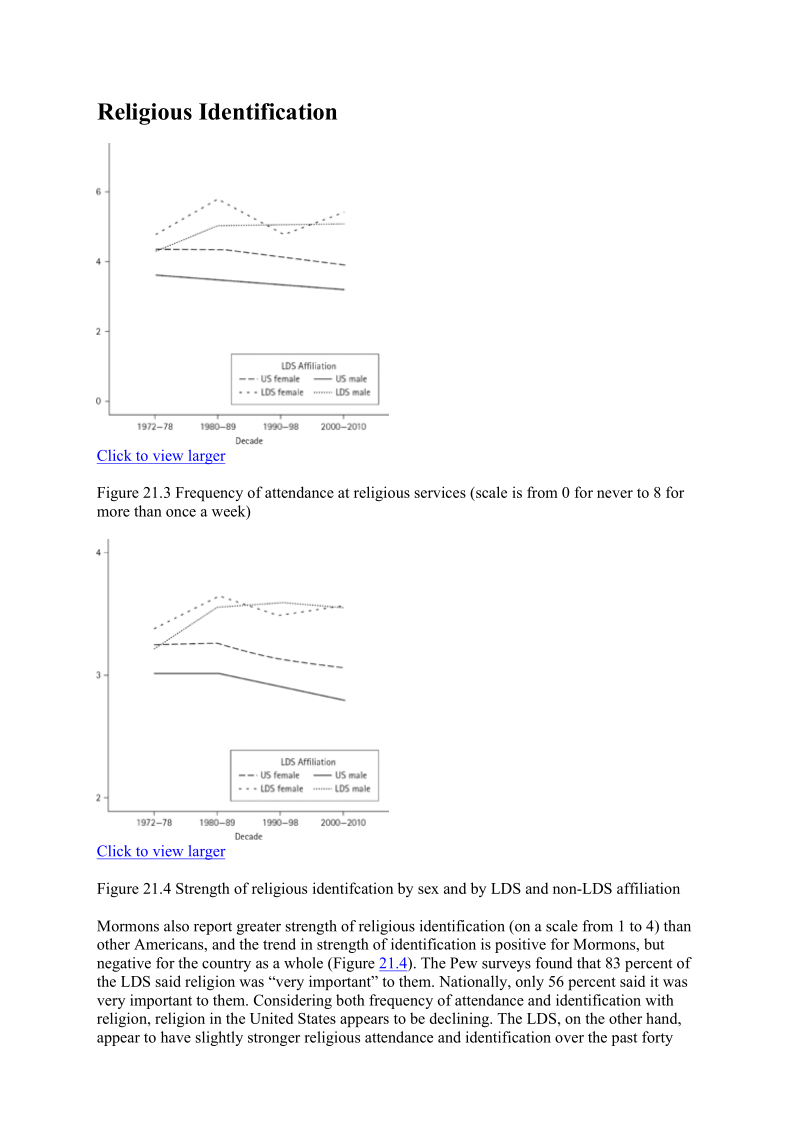Heaton & Jacobson analyze 2007 Pew data and cross-year General Social Survey data showing LDS divorce rates, also reporting cross-national data that shows higher divorce rates internationally.
- Type
- Book
- Source
- Tim Heaton LDS
- Hearsay
- DirectSecondary
- Reference
Tim Heaton and Cardell Jacobson, "The Social Composition of Mormonism," in The Oxford Handbook of Mormonism, ed. Terryl L. Givens and Philip L. Barlow (New York: Oxford University Press, 2015), 320-330
- Scribe/Publisher
- Oxford University Press
- People
- Cardell Jacobson, Tim Heaton
- Audience
- Reading Public
- Transcription
The Pew study shows similar results; it found that 71 percent of the LDS sample were married; only 9 percent were divorced or separated. Twelve percent had never married and 5 percent were widowed. The 71 percent was the second highest percentage of all the groups. Hindus were higher (78 percent) but that figure likely reflects the immigration of Hindu families together.
The proportions of the ever married population currently divorced, separated, or ever divorced are increasing (Figure 21.7). The proportions of both the nation and the LDS who have been divorced have increased quite dramatically over the four decades covered by the GSS. The proportion of the LDS who have ever been married and divorced has remained lower than the national average, particularly for LDS males. If there is good news here, it is that the rate of divorce appears to have leveled off for the LDS in the last decade. Divorce is less likely among the more educated and among frequent church attenders, and these two patterns are accentuated among Mormons. This figure does not distinguish between “active” LDS and those who do not attend. Other studies have shown large differences in divorce between active and inactive LDS.
The family characteristics of the LDS in the four other countries are reported in Table 21.6. Members of the LDS faith are slightly more likely to have never married compared to national averages in these other countries. They are also less likely to be in consensual unions; the LDS Church emphasizes the importance of marriage and discourages living together. Lower rates of widowhood among the LDS are likely due to the smaller size of the elderly population among the LDS. LDS members are less likely than others to report having only a religious marriage (in Mexico and Brazil). Rates of separation and divorce are higher among LDS members in each country except the Philippines. It is not clear whether this is because the divorced and separated are (p. 324) more inclined to join or because conversion to the LDS faith may be disruptive in some households.
- Citations in Mormonr Qnas
The B. H. Roberts Foundation is not owned by, operated by, or affiliated with the Church of Jesus Christ of Latter-day Saints.

